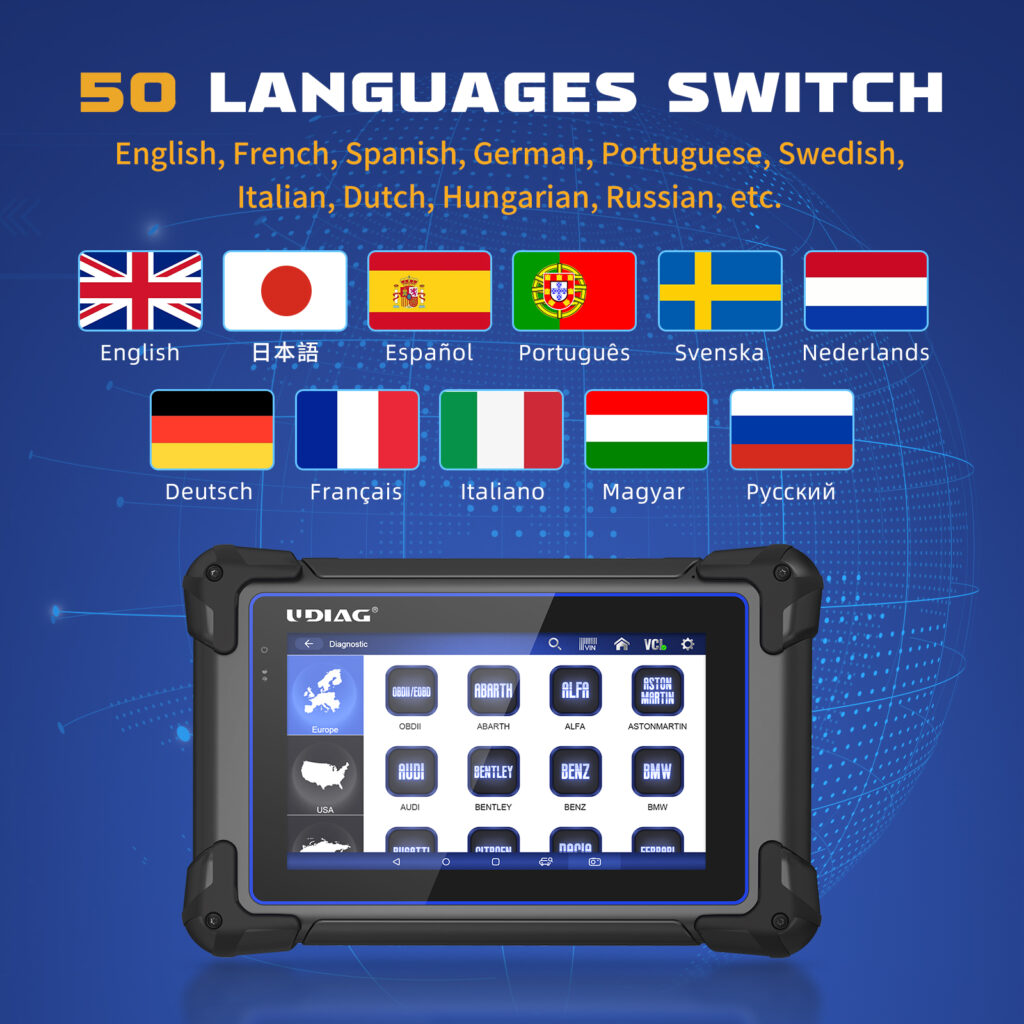Are diagnostic tablets easy to use for beginners?
2024-05-07 by UDIAG
Diagnostic tablets have revolutionized the way professionals in various fields conduct assessments and analyses. These portable devices offer a wide range of functionalities, from medical diagnostics to automotive troubleshooting. However, one crucial aspect often overlooked is their ease of use, especially for beginners. This essay delves into whether diagnostic tablets are indeed easy for novices to operate, examining factors influencing usability, advantages and disadvantages, user feedback, strategies for improvement, and real-world examples.

I. Understanding Diagnostic Tablets
Diagnostic tablets are handheld devices equipped with software and hardware tools for analyzing and diagnosing issues in various systems. They serve purposes ranging from medical diagnosis to industrial equipment troubleshooting. Common features include touchscreen interfaces, diagnostic software, and connectivity options. Different types cater to specific industries, such as healthcare, automotive, and manufacturing.
II. Factors Affecting Ease of Use
Several factors influence the ease of use of diagnostic tablets for beginners. User interface design plays a crucial role, with intuitive layouts and navigation aiding novice users. Accessibility of functions and settings is another determinant, as complex menus can overwhelm beginners. Integration with other devices and software also impacts usability, along with the learning curve required to master the device.
III. Advantages and Disadvantages
Diagnostic tablets offer several advantages, including portability, comprehensive diagnostic capabilities, and potential cost-effectiveness. However, they also pose challenges, such as overwhelming complexity for beginners and compatibility issues with existing systems. Maintenance and updates further add to the list of disadvantages.
IV. User Experience and Feedback
Surveys and studies on beginner users’ experiences provide valuable insights into the usability of diagnostic tablets. Testimonials from novice users highlight both successes and challenges faced when using these devices. Comparisons with traditional diagnostic tools offer further perspective on the usability of diagnostic tablets for beginners.
V. Strategies for Improving Usability
To enhance usability for beginners, manufacturers can implement several strategies. Simplifying user interface design, providing clear instructions and tutorials, offering customer support and training programs, and incorporating user feedback for product enhancement are effective approaches. These efforts aim to lower the barrier to entry for novice users and improve overall user experience.
VI. Case Studies or Examples
Real-world examples showcase the usability of diagnostic tablets for beginners. Success stories highlight instances where novice users effectively utilized these devices to diagnose and solve problems. Conversely, challenges faced by beginners shed light on areas for improvement in terms of usability and accessibility.
Conclusion
In conclusion, the usability of diagnostic tablets for beginners hinges on various factors, including user interface design, accessibility, integration, and user feedback. While these devices offer numerous advantages, they also present challenges that must be addressed to ensure ease of use for novice users. By implementing strategies for improvement and learning from real-world examples, manufacturers can enhance the usability of diagnostic tablets, paving the way for wider adoption and greater efficiency in various industries.
Get Access Now: https://www.udiagtech.com
FAQs
1. Are diagnostic tablets suitable for complete beginners with no technical background?
Yes, diagnostic tablets are designed to be user-friendly and accessible to individuals with varying levels of technical expertise.
2. Can I use a diagnostic tablet for personal use, such as troubleshooting my car?
Absolutely! Many diagnostic tablets are versatile enough to be used for personal as well as professional purposes, including automotive diagnostics.
3. Do I need internet access to use a diagnostic tablet?
While internet access may enhance certain features, such as accessing online resources and software updates, many diagnostic tablets can function offline for basic diagnostic tasks.
4. How long does it take to learn how to use a diagnostic tablet effectively?
The learning curve for using a diagnostic tablet varies depending on individual learning styles and the complexity of the device. With regular practice and utilization of available resources, beginners can quickly gain proficiency.
5. Are there different types of diagnostic tablets available for specific industries or applications?
Yes, diagnostic tablets come in various configurations tailored to specific industries and applications, including automotive, healthcare, industrial, and more.


